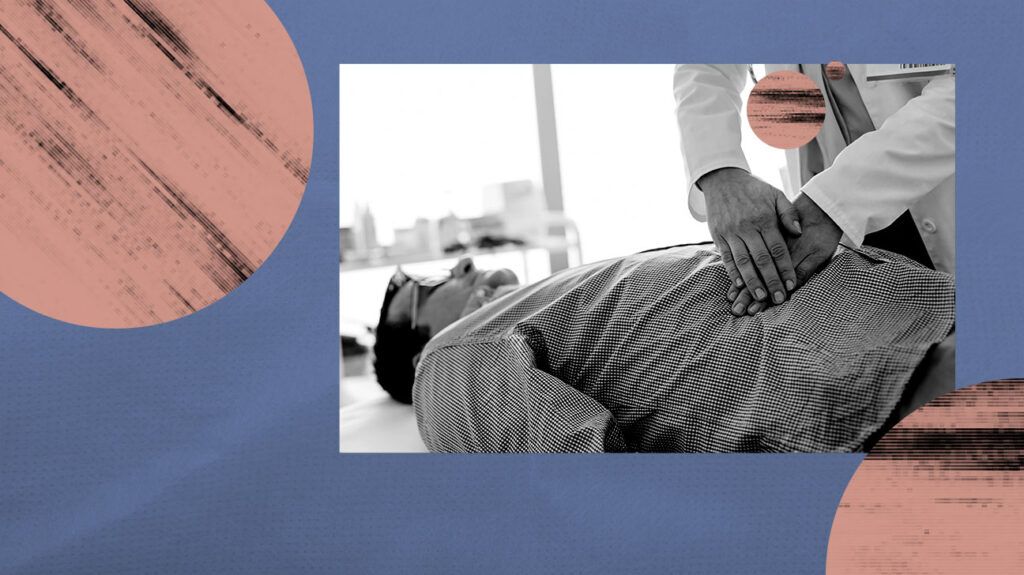Murphy’s sign is a method that helps healthcare professionals diagnose several causes of upper-right abdominal pain. These might include gallbladder inflammation, kidney infection, or bile duct infections.
Murphy’s sign is a key part of diagnosing some conditions causing pain in the upper right abdomen. Healthcare professionals mainly use it to identify gallbladder inflammation or cholecystitis.
However, depending on the symptoms when a healthcare professional administers the test, it may also suggest other conditions if the test does not produce pain indicating gallbladder inflammation.
This article explains what to expect when a healthcare professional administers the test for Murphy’s sign, what it means, and what comes next.

Murphy’s sign refers to the feeling of pain in the upper-right abdomen during breathing when a diagnosing physician is pushing down just underneath the ribcage.
According to a 2012 paper, an American surgeon named John Murphy first described what would later become “Murphy’s sign” in 1903 to diagnose acute gallbladder inflammation. To this day, Murphy’s sign remains the gold standard
However, some doctors refer to this as Naunyn’s sign, as a different professor, Bernard Naunyn, identified a similar sign some 13 years before Murphy did.
The main use of Murphy’s sign is to help diagnose gallbladder inflammation.
Because of the gallbladder’s location, it comes into contact with a hand mid-breath while a healthcare professional is administering Murphy’s sign. An inflamed gallbladder is highly tender and causes pain to the touch. This provides a quick way for healthcare professionals to identify and refer a potentially serious health issue to a specialist if necessary.
However, Murphy’s sign does not provide a final diagnosis. Further testing is necessary to confirm cholecystitis or gallstones, including:
- blood testing
- imaging scans
- other diagnostics to confirm:
- size
- location
- type of stone
Also, not all types of cholecystitis cause Murphy’s sign. For example, gangrenous cholecystitis, a type in which gallbladder tissue dies, can lead to the loss of nerve endings on the surface of the gallbladder. This does not cause the characteristic pain of Murphy’s sign but still requires urgent follow-up and confirmation through tests and imaging.
The test to confirm Murphy’s sign goes as follows:
- The individual will lie back and reveal their midriff.
- The healthcare professional asks the individual to breathe in while keeping their hand pressed into the person’s belly.
- The gallbladder moves downward during breathing.
- People with cholecystitis will find that they feel a sudden, sharp pain as the gallbladder reaches the healthcare professional’s hand.
- They will often ask the individual to complete a breath without applying pressure, in a modification of Murphy’s sign.
- The healthcare professional then refers the individual for further testing and treatment if necessary.
A modern variation of Murphy’s sign is the sonographic Murphy’s sign. During this technique, the medical professional uses an ultrasound machine instead of their hand to apply pressure to the upper-right abdomen.
While testing for Murphy’s sign, a healthcare professional might also ask:
- whether a person has
a history of health issues that make cholecystitis or gallstones more likely, such as:- liver scarring
- bile duct infections
- malabsorption disorders
- hemolytic anemia
- whether a person has a family history of gallstones
- a person’s typical eating habits
The healthcare professional may also test the left side of the abdomen to rule out pain on that side. Given the location of the gallbladder in the
Read more about gallbladder issues.
Murphy’s sign has two outcomes: positive and negative.
Positive Murphy’s sign
A positive Murphy’s sign means that a person feels pain in their gallbladder when the organ contacts the healthcare professional’s hand during a breath. It implies that the individual may have gallstones or gallbladder inflammation and requires immediate diagnostics and care.
Negative Murphy’s sign
A negative Murphy’s sign means that an individual can comfortably take a full, deep breath while a healthcare professional applies the pressure that usually produces Murphy’s sign in an inflamed gallbladder. However, upper right abdominal pain with a negative Murphy’s sign can also indicate health problems, such as ascending cholangitis.
Ascending cholangitis is a potentially life threatening infection
According to a
The following are answers to some questions people frequently ask about Murphy’s sign.
What is Murphy’s point in anatomy?
Healthcare professionals examine for Murphy’s sign just below the ribcage in the upper-right quadrant of the abdomen. “Murphy’s point” is not a recognized medical term for the area.
However, McBurney’s point involves a similar test for appendix inflammation in the lower-right quadrant of the abdomen.
What is Murphy’s punch sign?
Murphy’s punch sign is
Murphy’s sign refers to a person’s reaction when a healthcare professional presses an area in their upper right abdomen while testing for cholecystitis.
If a person stops their breath due to pain when the healthcare professional presses the area, this is a positive Murphy’s sign. This indicates the individual may have inflammation of the gallbladder.
A healthcare professional will refer people who demonstrate a positive Murphy’s sign for further gallbladder testing and imaging. A negative Murphy’s sign means that a person can breathe comfortably during this hand pressure, which may point to a different health problem, such as ascending cholangitis.
